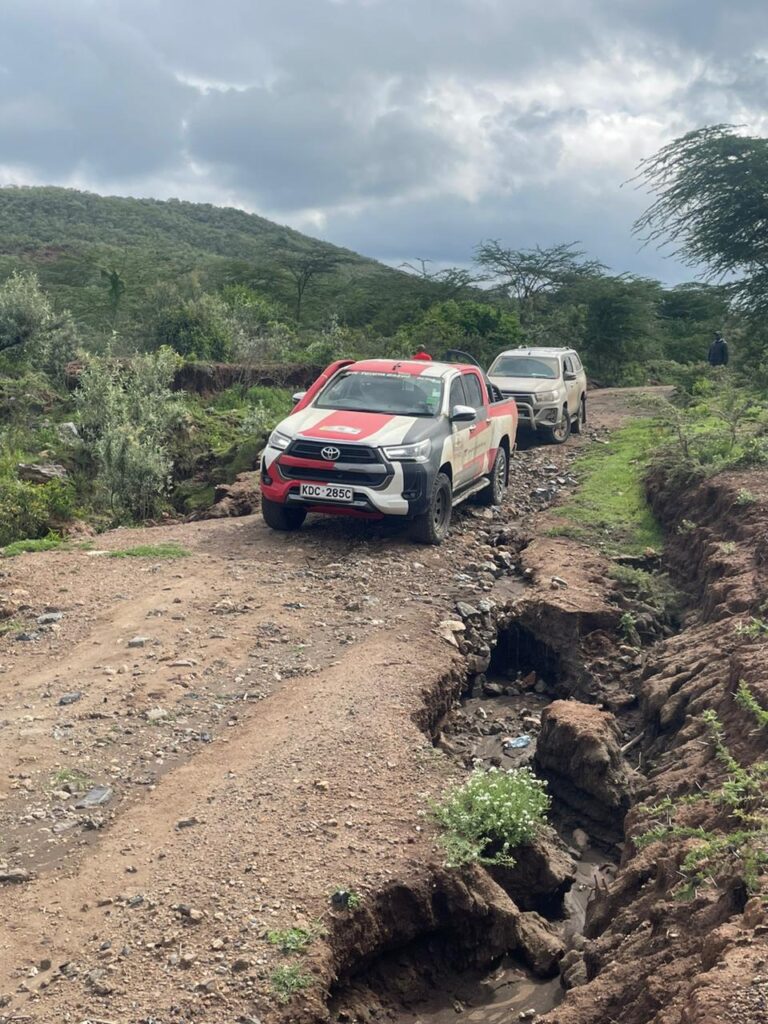As rally enthusiasts from across the world countdown to the biggest motoring event on the African continent, officials and volunteers at the WRC Safari secretariat have been busy, ensuring their area of focus is up to par.
With the rally action headed to Italy June 1-4, officials know time is not on their side. A spot check done by the Capital FM Sports Desk took us to Naivasha where we got a chance to join the safety team of Norris Ongalo, who is the head of Safety, Abbas Murbe, head of E-Safety and Anwar Sidi, the Media Safety Liaison as they set to do the route recce ahead of their respective teams.
We descended into Naivasha and went straight to work. We started off with the stages around the Great Rift Valley Lodge. With the rains pounding different parts of the country, the teams needed to prepare for the probability of a “Wet and Slippery rally.”
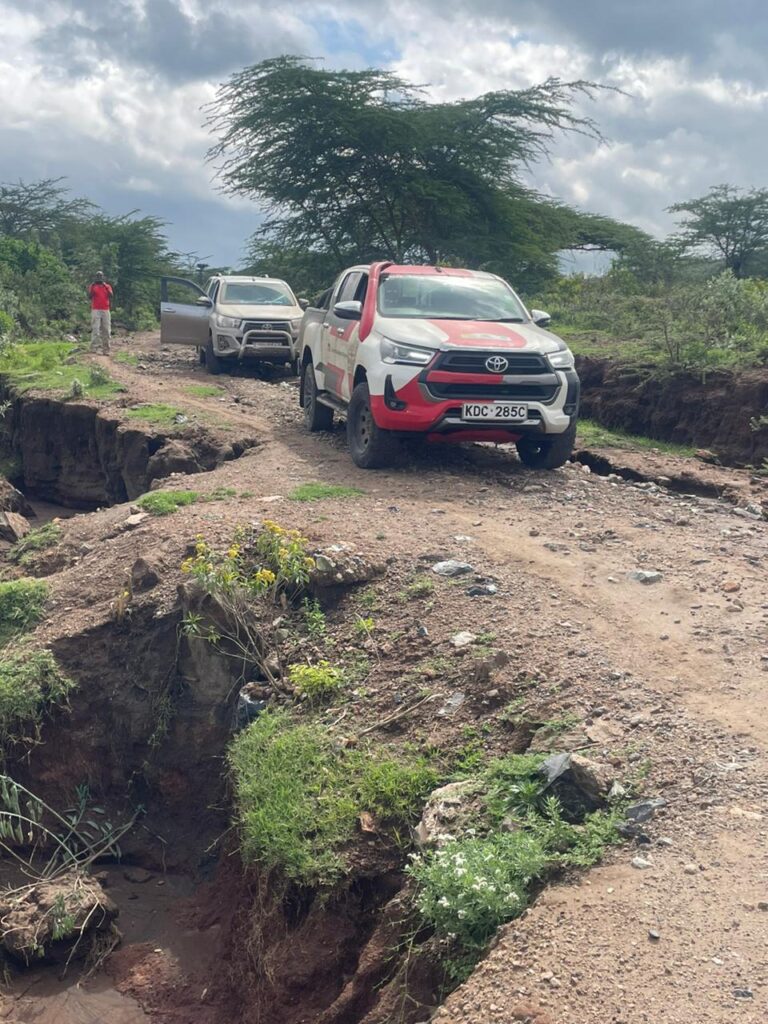
The FIA and Meteorology department are on record saying, “The phenomenon is forecast to return in June 2023, with dry weather conditions expected in key cropping areas of Central America, Southern Africa and Far East Asia, while excessive rainfall and possible flooding are foreseen in Near East Asia and East Africa.”
The Malewa route that was skipped last year is back though redesigned to start away from its usual point and will take the drivers through a course of about 9.3km.
The road surface was nothing out of the ordinary; rocks and pebbles scattered across the road as the loose soil has been swept away by the recent rains and weathering over time.
Shakedown was a pleasure to drive through; the ‘fesh fesh’ that usually characterizes the first day of the event.
The rains have helped the road conditions. This is one of the few stages that will not need any repairs. The emergency teams of the technical intervention vehicles and medical teams will be only four minutes in the event of an incident on the road and a matter seconds by air.
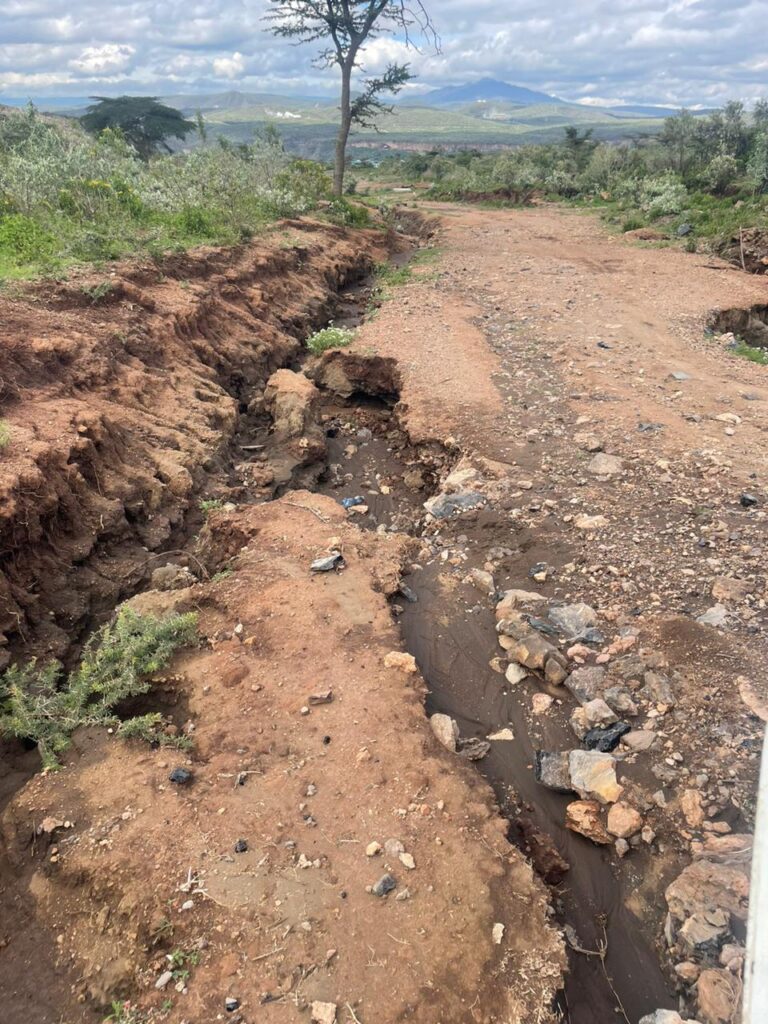
Loldia will be an interesting stage especially in the wet as some part of the stage will test the drivers handling and their ability to adjust to the new conditions.
The photos from the media point offer a picturesque opportunity as Lake Elementaita and the green valley below shows off its splendor.
We moved to the Chui stage just as it started to drizzle. The ordinarily dry and dusty start has been pushed back to avoid the ‘fesh fesh’ that gave the drivers and organizers a ‘tid bit’ of a problem last year as drivers struggled through the start if the section.
The rains had been kind to this stage as the grass was green, road was pretty good and would see the drivers comfortably hit good speeds.
Geothermal stage seemed heavily hit by the rain. ‘Deep Wash aways’ and trenches appeared on different sides of the road. Repairs have commenced on the areas that were damaged and should be completed in a couple of days. This should be one of the fastest stages of the 2023 WRC Safari Rally.
Hells Gate seems to have changes into heavens plains as all the ‘fesh fesh’ when dry has been held together to give you a beautiful view as you drive through.
A bit of patchwork in a few key areas and it should be ready for action.
The response time as slated in the FIA recommendations in 10 mins. The WRC Safari Safety team have cut that down too 7 mins at an average speed of 30Km/h in the worst-case scenario.
We ended the day in Kedong stage, where parts of the ranch have been sold off.
The beautiful thing is that the owners know and love the rally and have offered to remove the fences around the one part of the rally route that has been affected to allow the rally route to remain as is.
Special entry routes will be created for smooth movement of rally fans who would like to come in and out of the stage at their leisure without affecting rally traffic.
-Spectator stage relocated-
The spectator stage, close to what is usually the VIP tents allocated to the sponsors will have to be relocated slightly as one of the people who has bought land on that side of the ranch has erected a stone wall. The wall will not affect rally traffic.
It was getting late so we made our way back to the hotel to compare notes and plan for the next two days.
-Nakuru Stages-
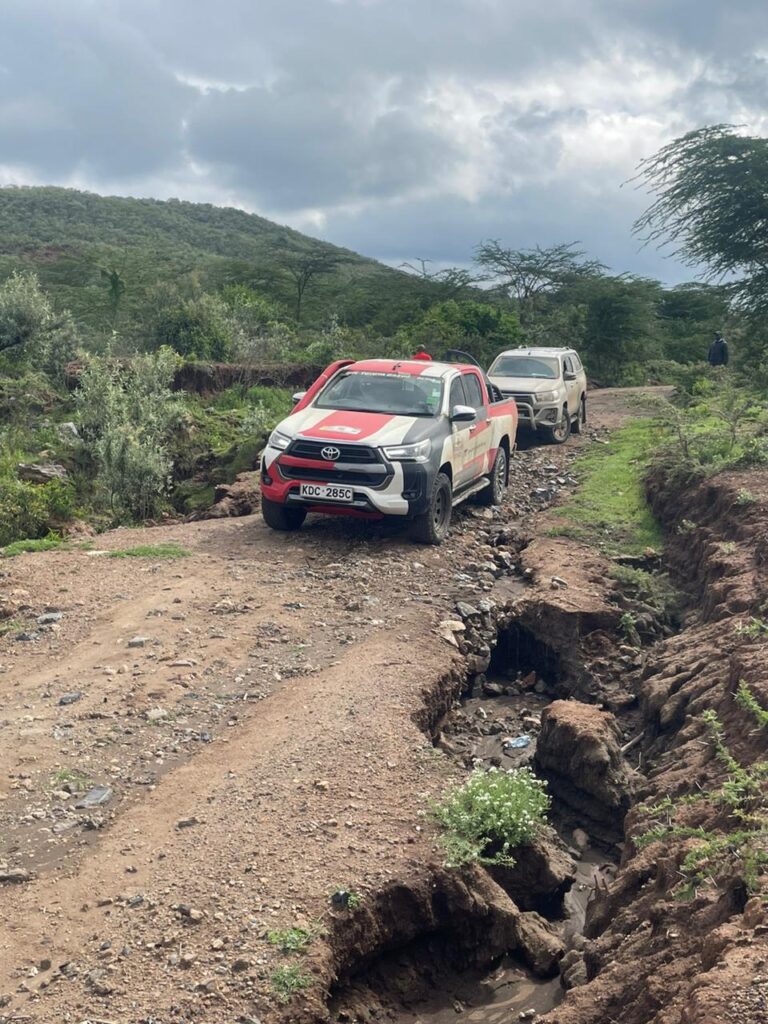
Day two and three took us through the “Nakuru Stages” of Sleeping Warrior, Elementaita and Soysambu.
We took the rear route from The Great Rift Valley lodge through the foot hills of Mt. Eburu.
The route had been backfilled and graded for last year’s event but had suffered due to the lack of drainage that saw the flood waters leave open galleys.
In a distance we could see water collecting in farms on the lowest part of the rift valley floor.
A few phone calls were made and a promise to have what is used as an emergency escape route would to once again be repaired and done within two weeks.
The Sleeping Warrior; had slept a deep slumber as all it needed was a quick fix around the ‘rocky’ section of the stage as you go round the hill closer to the warrior himself.
In the wet, this will be an interesting stage as the ‘Black Cotton soil’ could through a curve ball that will make achieving tops speeds interesting.
Soysambu and Elementaita have recently fit a new electric fence round the entire route from the Kikopey side all the way to the ‘Pipeline Road.”
Apart from the heavily silted river crossings, Soysambu sems very much unchanged if the clouds hold their contents.
However, in the wet, things could change, the start of the stage could be interesting as the black cotton soil tests the drivers and their ability to drive in ‘Kenyan Mud.’
The Elementaita stage rained halfway through last year’s event during the second loop rendering the navigators notes outdates as the slippery muddy tracks a beauty to watch for the fans but a headache for the drivers.

The WRC Website as saying “SS13 – sleeping Warrior 2 was exhilarating to watch as the hybrid-powered Rally1 cars were aquaplaning all over the road in the waterlogged conditions.”
Almost every driver had at least one ‘moment’ in the 31km blast, with Thierry Neuville failing to make it out of the stage after hitting a tree with limited visibility.”
We finished late in the evening and spent another five hours trying to find our way out of Elementaita/Soysambu in the dark as the ‘New gates” were not manned and the one gate we intended to leave didn’t have the right keys to the new locks.
It was pitch black, we were cold and hungry as it has been a relatively hot day.
We got lost in the bush and drove round in circles before eventually making it back on to tarmac hours later.
At some point we had to make our own route, followed cattle tracks and when we got closer to civilization, we used the lights as landmarks that brought us to the gate we used to get into the stage.
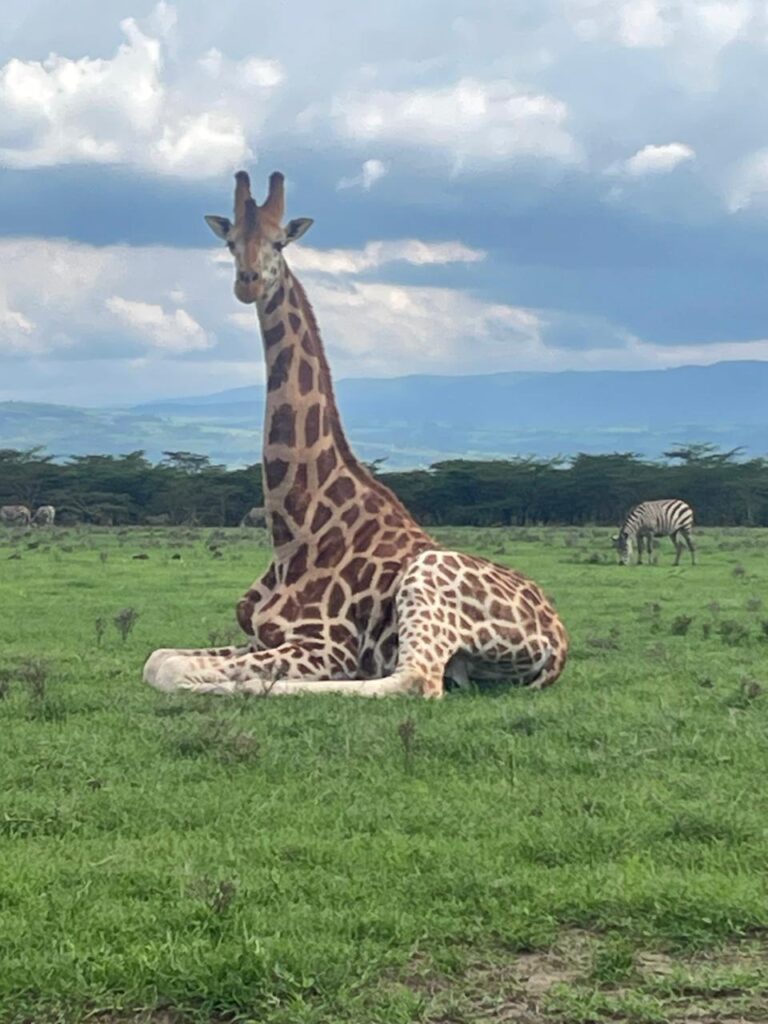
On the flip side; the rains have been good for the animals. We saw more zebra and Giraffes than we have seen over the last three years.
We finished off the other stages in the next few days and reviewed our findings allowing for the Road Book to get the final updates that will allow the rest of the Safety teams make their way into the stages to verify the information in it as well as make their own plans to ensure that the 2023 WRC Safari Rally, scores better than the 2021 and 2022 events.
Back in Nairobi, The WRC Safari LOC (Local Organizing Committee) have been burning the midnight oil as they head on to the last stretch of the upcoming event.
They have been moving line by line, going through each and every deliverable ensuring that they do not miss anything.
Their intention being delivering a successful WRC Safari and securing the annual slot for the years to come.
At the end of every year, the FIA and the WRC governing body evaluates the existing rules, safety measures, and other aspects of the championship to make any necessary revisions or improvements.
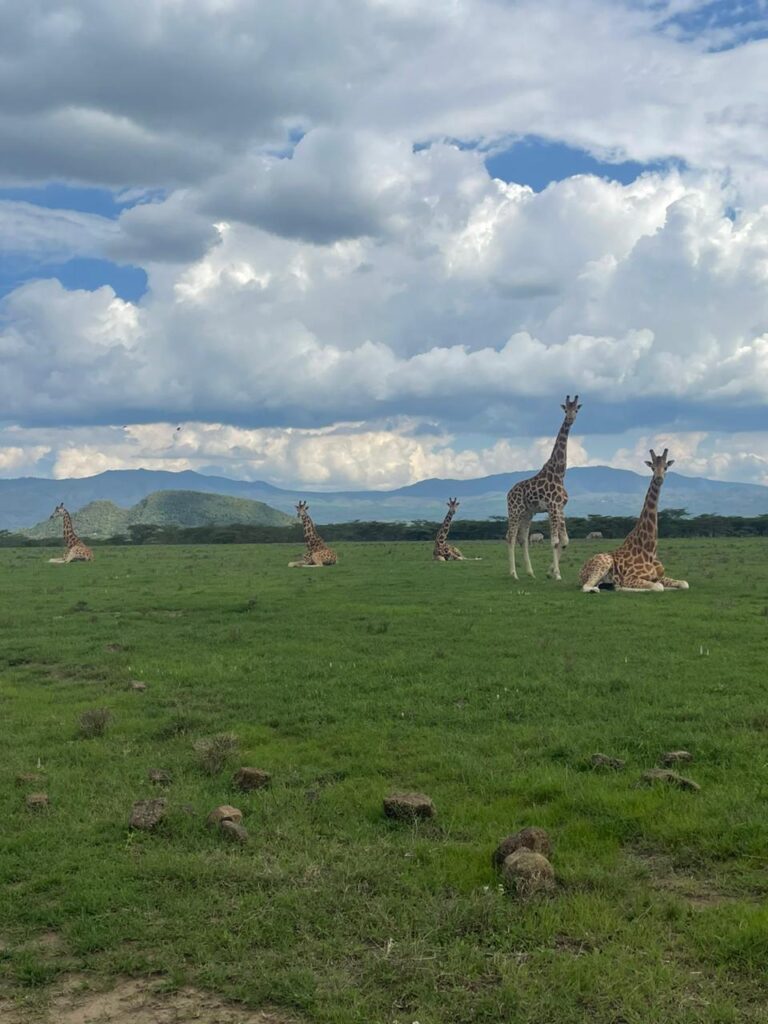
This is done to ensure the safety of the drivers, crew and fans based on the most current events and activities that happened at the any one of the 13 events across the calendar in that year.
With a total of 34 drivers including three factory teams from M-Sport Ford, Toyota Gazoo Racing and Hyundai confirming participation in the 70th edition of the WRC Safari Rally Kenya, the event slated for June 22-26 is bound to live up to its reputation of the “Great Kenyan Experience in Africa.”

